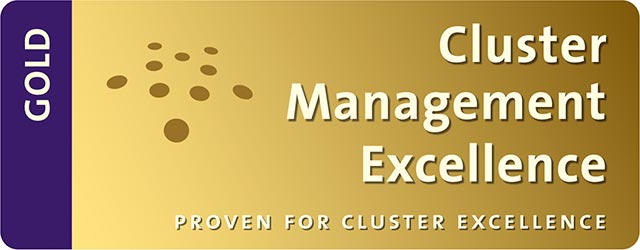Gæsteklumme af Alis Hinrichsen, Commercial Business Development Lead, Optilon
At Optilon we believe, that efficient Supply Chains are more sustainable. With changing consumer behavior, intense online competition, and high service expectations, it is all too easy to get planning wrong and squander precious resources. The knee-jerk response to Supply Chain change and disruption is to boost safety stocks – but this can lead to waste and considerable excess costs. Machine Learning-powered Supply Chain planning offers a way to avoid this problem and boost service levels.
This long-read article reveals ways you can start to reach short-term sustainability goals while freeing up working capital to fund the more complex, long-term ones. Not only will your customers – who increasingly care about environmental sustainability –value these improvements, they’ll also get better service.
Optimize Your Inventory
It all starts with a better demand forecast.
Remember that old adage, “haste makes waste?” It quite literally does! If you plan well from the start, you can avoid all sorts of costly, time-consuming activities down the road–or down the chain, so to speak.
The place to start for a more efficient inventory stocking strategy is better understanding your demand so you can precisely predict how many items you need, where and when. Your demand planning process and tools should understand and automatically adapt to the full spectrum of demand behavior in an SKU portfolio by factoring in order volume and frequency. Rather than planning inventory levels around ‘one number,’ your system should produce a range of possible numbers, centered on the one that’s most likely – just like a weather forecast. This method is known as probability forecasting.
Combine this probability forecast with demand modeling for a fuller, more precise view of the various factors that influence demand, such as promotions, seasonality and product lifecycle behavior. This approach allows you to consistently place better inventory bets than your competitors for those harder-to-forecast items. And when you reduce overstocking and stockouts, you free up working capital and improve service levels at the same time. This tried and tested approach can provide a sustainable competitive advantage–and it can restore trust in your forecasting.
Having the right inventory in the right location brings with it a host of other waste reduction benefits:
SLASH WASTEFUL EXPEDITING COSTS
When you better anticipate customer demand, you reduce the need to expedite with CO2 unfriendly transport modes, along with costly in-network transfers from warehouse to warehouse. Rush orders and transfers erode profit margins, and often companies fail to see that poor demand forecasting and inventory stocking are the origin of the problem. Solve the root cause to eliminate costly reactionary activities.
REDUCE CARBON EMISSIONS
Eliminating wasteful expediting and warehouse transfers means fewer carbon emissions from inefficient and unnecessary truck and rail transport.
MINIMIZE INVENTORY SPACE
It’s estimated that up to 22% of inventory is unnecessary. When you remove it with a smarter stock mix, you minimize the amount of space required for inventory and reduce overhead costs such as power, heat and real estate–and still meet or exceed service commitments.
IMPROVE EFFICIENCY AND TIMING OF ORDERS
Often companies focus singularly on inventory turns, and as a result may have inefficient order cycles. For example, it may be that placing orders every week may not be as efficient as every two weeks, even if inventory isn’t turning as frequently. This results in too many costly shipments and requires extra labor to receive, cut purchase orders, store and pick the items. A better solution is to identify the optimum order cycle which is aligned with potential customer demand and tied to a service objective. This helps you maximize both space and profit. Ask yourself, how can you best satisfy customers with your available space?
RETHINK YOUR ONE-SIZE-FITS-ALL SERVICE STRATEGY.
Today consumers want more flexibility to reduce packaging and emissions or to choose alternate delivery options. As a result, fulfillment is changing, including direct to consumer, dark stores and city hubs. In-store fulfillment isn’t just grocery anymore. The key is having the analytical capability to position inventory across the network to fulfill changing demand. You need a richer, more credible demand signal to make it happen. It all comes back to understanding your customer demand, and delighting them by providing the items they want with the right level of service.
CUT FUEL AND UNUSED TRANSPORTATION CAPACITY
There are plenty of ways you can improve transportation efficiency through better inventory optimization.
MAXIMIZE FULL TRUCK LOADS (FTL) AND CONTAINER SHIPMENTS.
A vehicle or container running empty or partially full is wasting space and fuel and generating excess carbon emissions. Larger companies with their own fleet can minimize empty return trips (deadheads) with backhauls. Instead of returning empty after drop-offs, your planning solution can help you group vendors for return pick-ups to make the most of available freight capacity, improve efficiency and balance inventories. Most companies will even provide an allowance when you provide the transportation.
Planning technology can also help you take better advantage of economies of scale with international shipments. For example, your system can recommend how best to work with vendors and contractors to fill ocean containers and create balanced loads for optimized freight investments.
MAKE SMARTER TRANSFER DECISIONS.
Another area you can slash wasted transportation cost is transfer decisions. When you need to move inventory from one location to another, you are often faced with two options: do you place another order and risk an overstock, along with the extra cost of running a truck? Or would it be better to balance the inventory via a transfer among a group of associated warehouses?
Your planning system can help you identify which transfer option will save the most money and ensure sustained service. When you input the transportation modes (box, semi, train, ship, etc.) and limitations of each (cube, weight, kroner, etc.) your planning system will calculate the most efficient transfer option at the click of a button. It can also suggest opportunities to re-balance inventory when a location has excess stock that can be better utilized at alternate locations.
Crank up manufacturing efficiency
You guessed it: better inventory planning has a beneficial effect on manufacturing efficiency too. It works as a “helper” to enable you to execute manufacturing better: more efficient production planning reduces the need for plant overtime to produce out-of-stock items, also has a smoothing effect on production, minimizing peaks and troughs. Here are some specific ways to reduce waste in the manufacturing process.
IMPROVE CAPACITY PLANNING
Capacity planning is much more than simply calculating resource load based on production requirements and throughput rates. Your planning system must help you manage both constrained and excess capacity, effectively balancing the competing objectives of customer service and manufacturing. It works this way: when you consider the probabilities associated with demand, there is less of a “cost” to rescheduling some planned orders than others. When you have excess capacity, your planning system must pull forward the planned orders that can best contribute to service performance. When you have capacity constraints, you must manage the trade-offs across items to reduce the overall risk of a stockout or a shorted customer order. By managing over a longer horizon, you can better leverage available capacity to reduce the possibility of future shortfalls. This helps reduce the need for additional shifts or overtime.
REDUCE PRODUCT TRANSITIONS
Digital planning has a compounding effect on manufacturing efficiency. Safety stock levels can be optimized to provide a better buffer against demand variability. This increases schedule adherence and reduces the need to run small batches to fill orders for out-of-stock items; small batches generate higher emissions per unit of output. And by evaluating production requirements over a longer horizon, you can better plan campaigns to minimize the start-up / shutdown of equipment required for changeovers, which conserves energy and cuts carbon emissions.
REDUCE RISK OF OBSOLETE INVENTORY
Probability planning has one other key benefit to production planners. By adjusting the lens over a longer-term planning horizon, your planning system can provide an early warning signal when stock levels are projected to exceed maximum targets. This allows for timelier course correction, which can occur in the form of promotions or other pricing actions to move stock, or through supply adjustments to push out future replenishments. See more about minimizing obsolescence in section #4.
Slash Waste Due to Obsolescence and Expiration
The World Economic Forum estimated in March 2021 that food loss and waste costs the global economy $936 billion a year. It said that food systems cost society $12 trillion dollars in health, economic and environmental costs – which is 20% more than the market value of food systems themselves.
Inventory planning is complex in general, but even more so when products have a potential risk of obsolescence. In process manufacturing, grocery and other industries with shelf-life requirements, this typically results in high inventory write-offs as lots age out. In discrete industries, in which products are frequently updated with new models, the problem manifests in heavy discounting to liquidate stock of the original components when the new model is launched.
You can finally get ahead of lots that are at risk and avoiding overplanning stock by understanding the inventory you have and when it will expire. A more accurate forecast results in producing the right amount of goods to avoid sell-off. Next-gen inventory optimization defines an inventory mix that takes into account shelf life to maximize freshness and minimize risk of obsolescence. It does this by generating a stock to service curve that helps you understand how best to achieve service levels without risking obsolescence. You satisfy customers while minimizing the risk of having to throw out materials.
Prevent Staff Burnout While Raising Productivity
You’re probably beginning to see a pattern: better planning = greater efficiency. This is also true with your human resources–the planners who orchestrate the plan that keeps your products stocked and your customers happy.
Traditional supply chain solutions were not designed for today’s high variability demand. Inventory mixes and service levels get out of balance across the network—and out of line with business objectives. Trust in the planning process erodes. Planners are forced into reactive “firefighting” mode which all leads to a cycle of excessive costs, waste and obsolescence.
Elements of supply chain planning are ideal tasks to “outsource” to AI automation–machines executes analytical tasks and repetitive calculations faster and more accurately than humans. In other words, this isn’t a case of machines replacing people’s jobs: automation plugs a skills gap that humans can’t practically fulfill. Planning automation eliminates inefficient, reactionary activities and gives planners and buyers AI-generated insights about promotions, seasonality, and other external demand influencers.
Efficient Supply Chains are more sustainable
Summing up we could say that efficient Supply Chains are more sustainable. Sustainable Supply Chains and savings go hand-in-hand with digital supply chain planning.
- Smart supply chain planning can reduce inventory holding costs by 12-25%
- More than 70% of consumers continue to secure free shipping by opting for the longest lead time available from retailers.
- Smart supply chain planning can reduce transportation costs by 2-5%
- Smart supply chain planning can reduce production transition days by 3-18%
- Smart inventory planning can reduce obsolete stock by 5-20%
- Supply chain planning automation can reduce planner workload by 50-90%, freeing planners to drive business performance rather than manipulating forecasts.
- Intelligent inventory optimization calculates the optimal inventory buffer considering demand uncertainty.
Happier customers, lower costs, a greener supply chain – even better work life/balance for your team. Digital supply chain planning is something everyone can get behind. It’s your turn to make it happen: how do you compare to others in your industry? How will you improve?
This post is made in collaboration with Toolsgroup.

